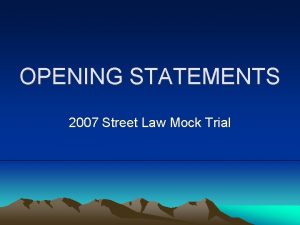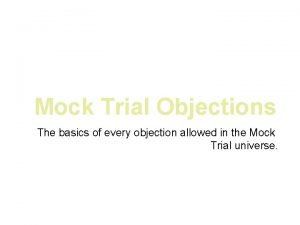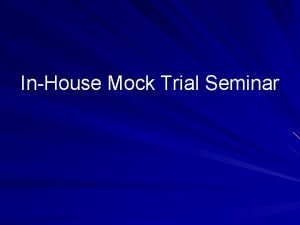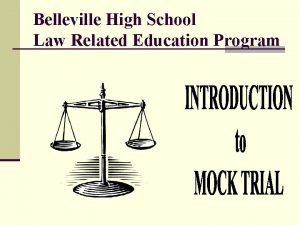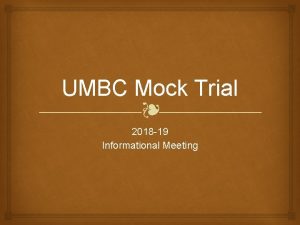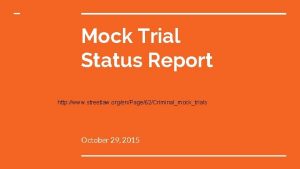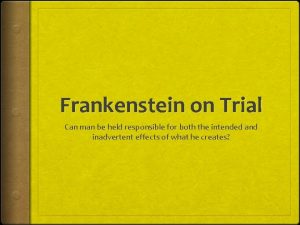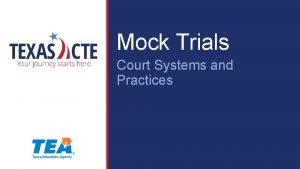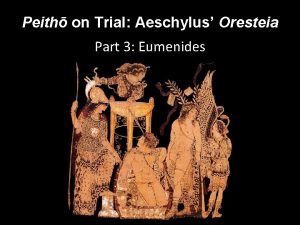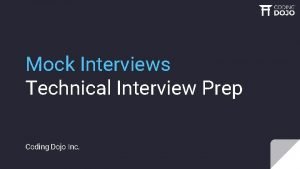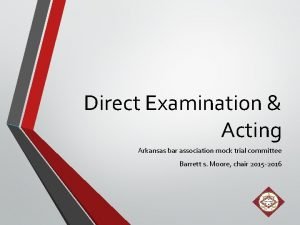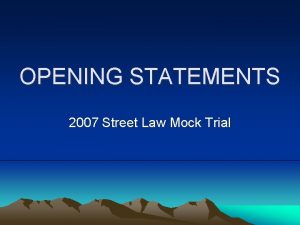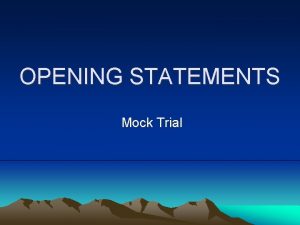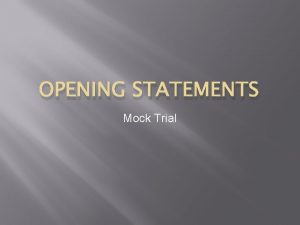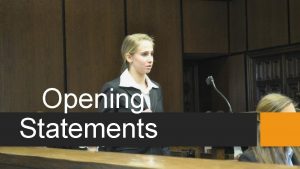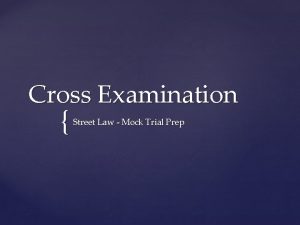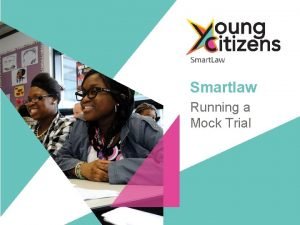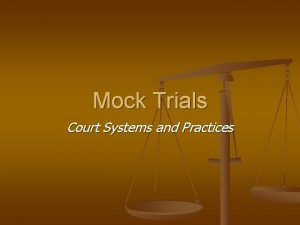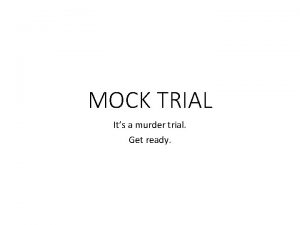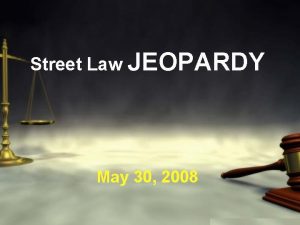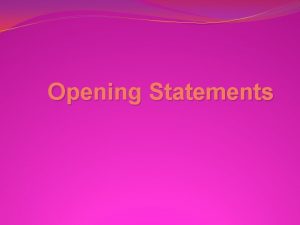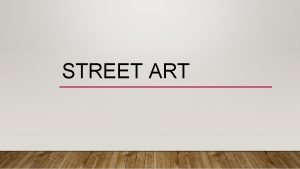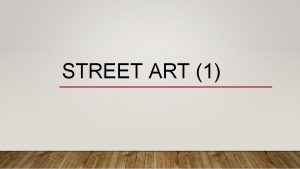OPENING STATEMENTS 2007 Street Law Mock Trial WHY




















- Slides: 20

OPENING STATEMENTS 2007 Street Law Mock Trial

WHY is the opening statement so important?

THEORY – Why is a theory important? – When do you establish your theory?

THEME – On what should themes be based? – Some examples: • • “This is a case about taking chances. ” “Mary Jones had a dream and a plan. ” “Revenge. That’s what this case is all about. ” “This is also a case about pain. Mr. Johnson’s only companion today is constant pain. ” • “This is a case about police brutality”

LABELS • A label, what’s that? • Will each side use the same labels?

• What makes an opening statement GOOD? • What makes an opening statement GREAT? • What makes an opening statement PRIZEWINNING? ? ?

WHAT TO DO: • Effectively tell a story. – Focus on the people, not the problem. • Who are the important players? • Most jurors view the world through emotional eyes. • Personalize your party. – Why? – Make the story vivid. • Re-create the incident. • Make it emotional and dramatic (we love drama!) • • KEEP IT SIMPLE. Be Logical and concise. – Walk the jurors through the events in chronological order.

WHAT NOT TO DO: • Do NOT include personal opinions • Do NOT overstate the evidence

SECRET WEAPON • Anticipate weaknesses

The parts. • • • Introduction Parties Scene Instrumentality Date, time, weather and lighting Issue What happened Basis of guilt/nonguilt Anticipating and refuting the other side Conclusion

Introduction • Themes • Theory • Enthusiasm, confidence, and integrity

PARTIES • Introduce essential people – Parties – Critical witnesses • Prosecution’s counsel: – Tell a story about your client. – Build him/her up and make him/her sympathetic to the jury – Get the jury to relate • Defense’s counsel: – Important parties and witnesses that Plaintiff’s counsel didn’t mention/glossed over

SCENE • Describe the scene so the jury can visualize it.

Instrumentality • Vehicle, machinery, equipment, etc. • (most important in personal injury/products liability cases)

Date, time, weather, and lighting • Set the stage. • Describe the context.

ISSUE • Important tool for defense: – Denial of Prosecution’s version of the disputed facts of the case

What happened - THIS IS YOUR MOMENT. - Your job? Get the jury to believe your side of the story.

Basis of guilt/nonguilt • PROSECUTION: – Summary of facts – Conclude that client is entitled to win • DEFENSE: – Point out holes in plaintiff’s story – Find ways plaintiff’s story is not persuasive – Emphasize your OWN picture and conclusion

Anticipating and refuting other side • PROSECUTION: – Defuse the defense, without appearing defensive • DEFENSE: – Can talk about evidence that Plaintiff has already described

Conclusion • Keep it brief. KEEP IT SIMPLE. • Simply and directly tell jury that facts of the case will support his/her side, and ask for a verdict. – “Members of the jury, after you have heard the evidence, we are confident that you will find the defendant guilty of each count in this indictment: armed robbery and murder. ” [Prosecution] – “At the conclusion of this case, you will have grave doubts that Tom Smith was anywhere near the robbery when it occurred. If anything, you will be convinced that someone else did it. Consequently, Tom Smith is simply not guilty of anything. ” [Defense]
 Street law mock trial
Street law mock trial Mock trial opening statement
Mock trial opening statement Mock trial objections
Mock trial objections University of iowa mock trial
University of iowa mock trial Mba mock trial
Mba mock trial Rinhouse trial
Rinhouse trial Mock trial high school
Mock trial high school Mock trial audition tips
Mock trial audition tips Chris archer mock trial
Chris archer mock trial Frankenstein mock trial
Frankenstein mock trial Mock trial order
Mock trial order Mock trial interview questions
Mock trial interview questions Oresteia mock trial
Oresteia mock trial Coding dojo interview questions
Coding dojo interview questions Mock interview lesson plan
Mock interview lesson plan Arkansas mock trial
Arkansas mock trial Hey hey bye bye
Hey hey bye bye Newton's first law and second law and third law
Newton's first law and second law and third law Newton's first law
Newton's first law Boyles law
Boyles law Avogadro's law constants
Avogadro's law constants
